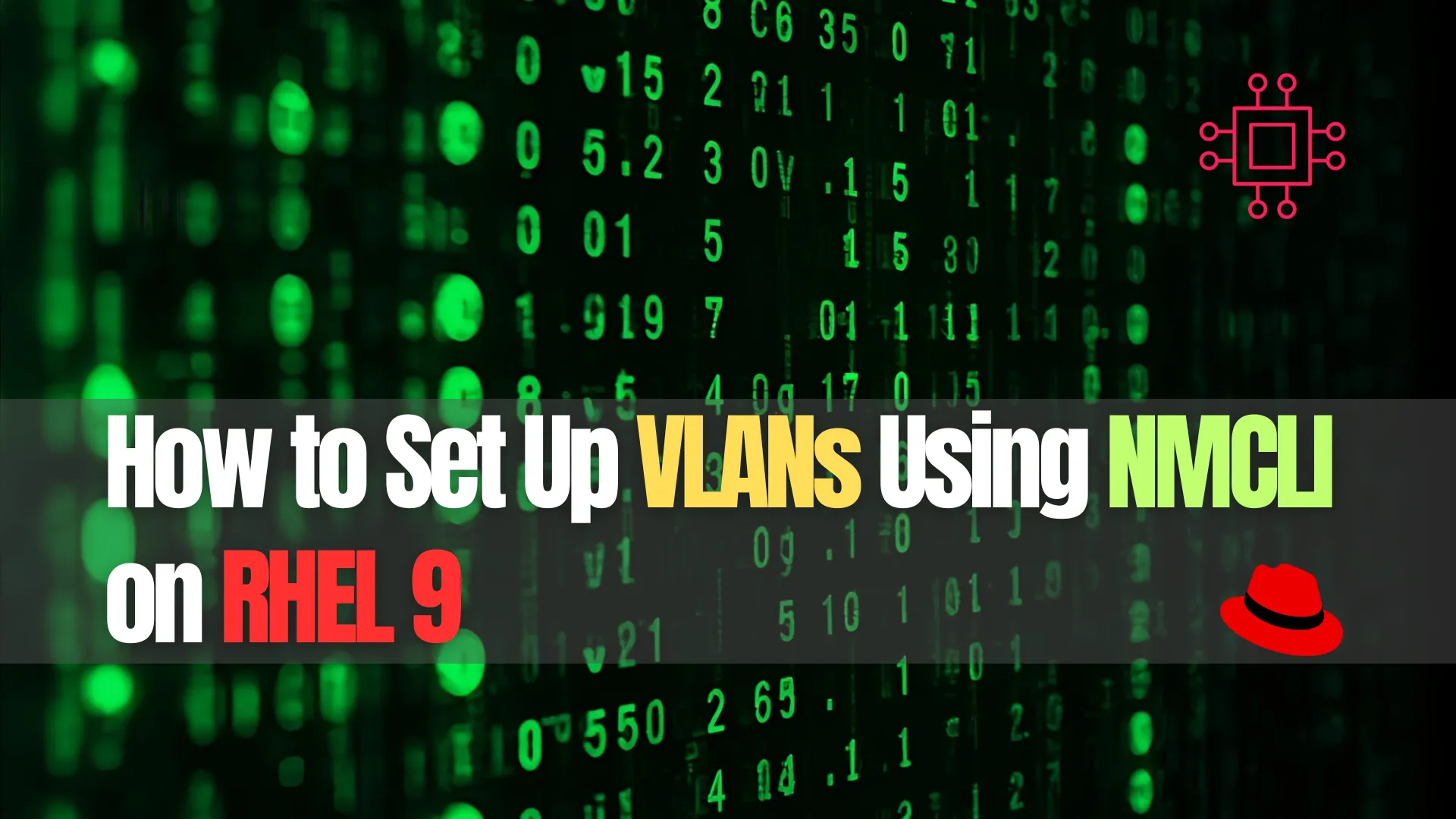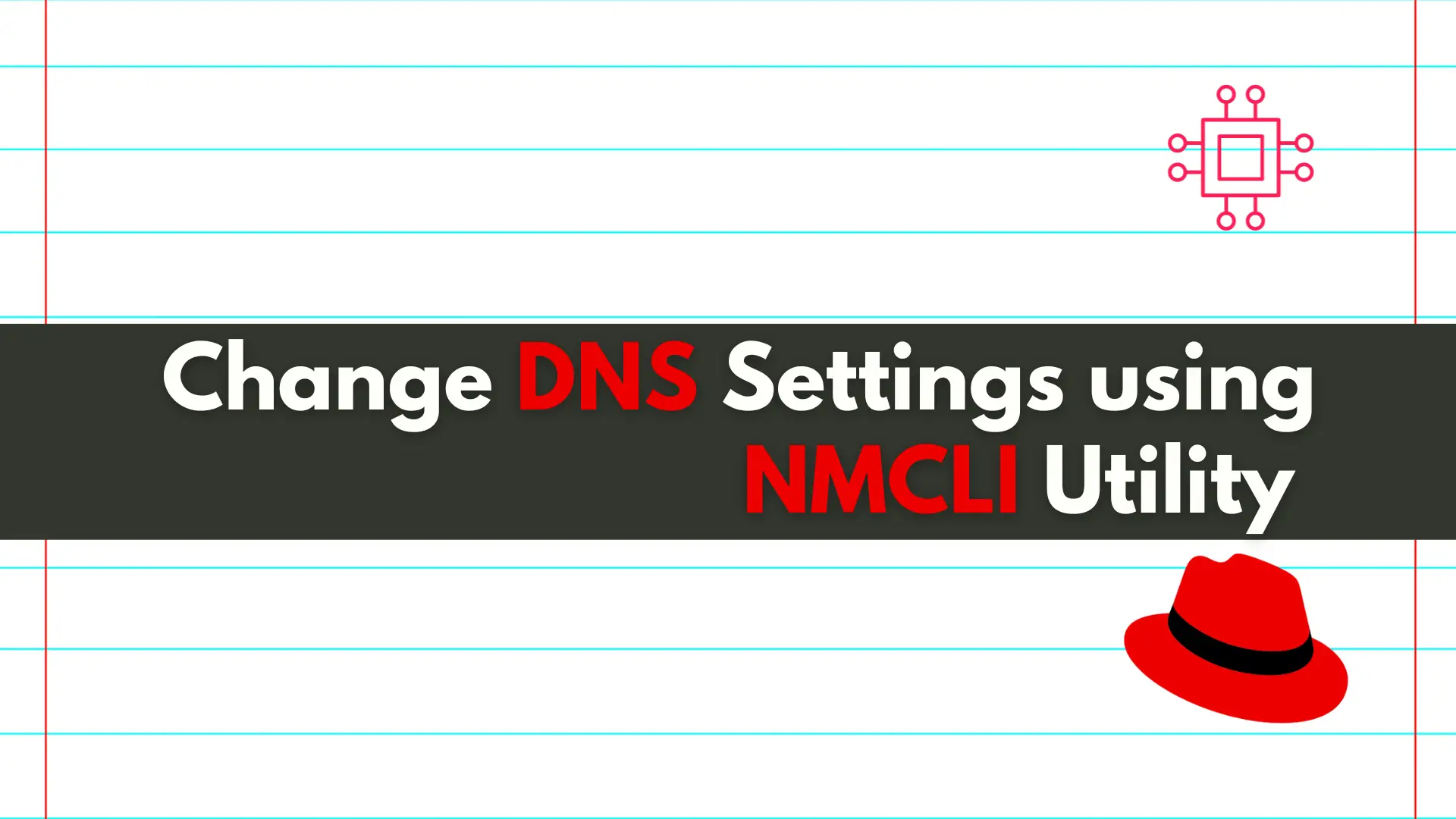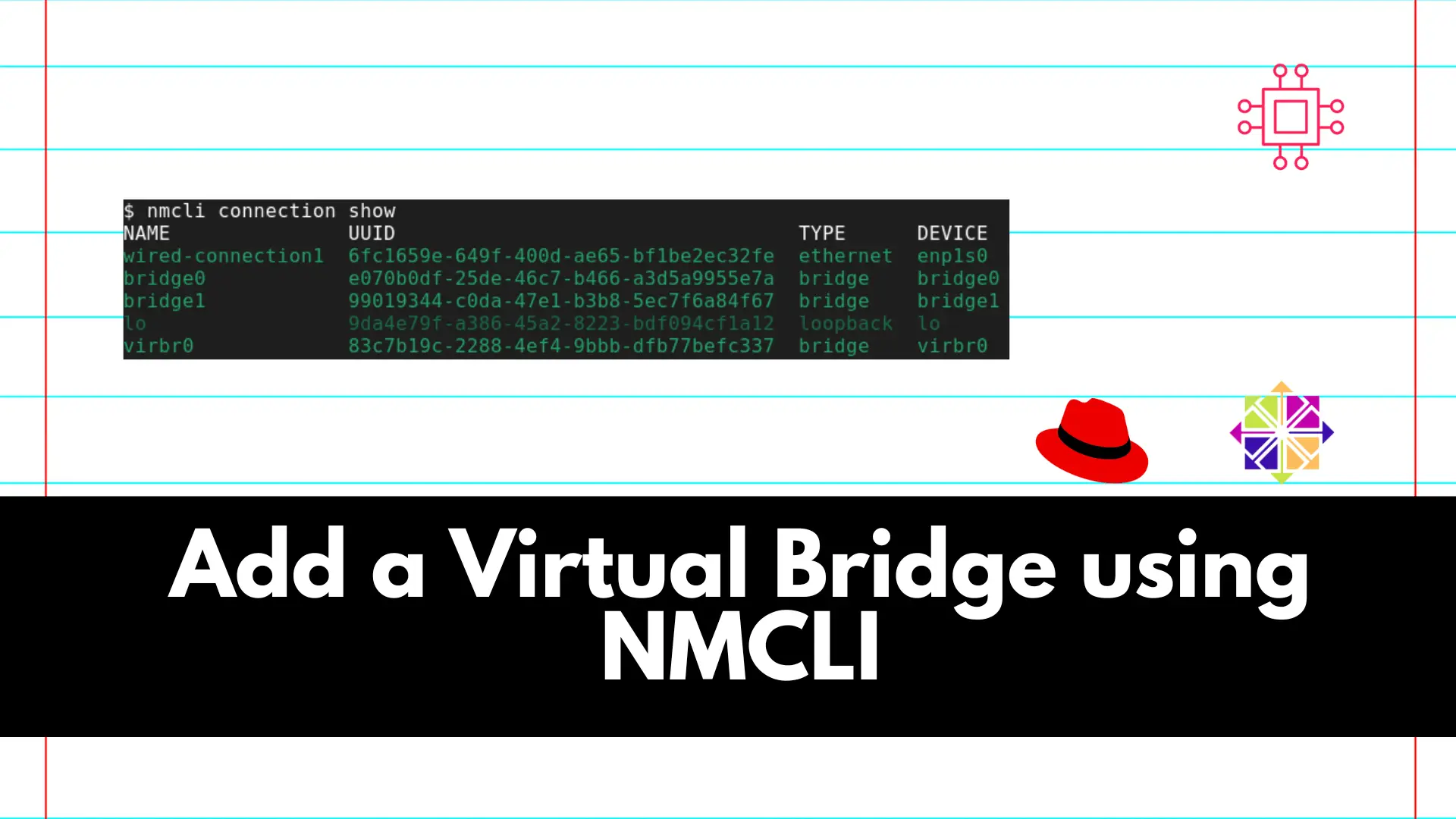
Learn how to set up VLANs using nmcli on RHEL 9 with this step-by-step guide. Includes CLI examples, troubleshooting tips, and best practices for configuring

Learn how to configure a bonded interface with VLAN tagging on RHEL 9: a step‑by‑step guide using nmcli and nmstatectl, architectural best practices, troubleshooting tips, and examples.
In modern data centers, combining interface bonding (link aggregation or redundancy) with 802.1Q VLAN tagging is a common requirement. In RHEL 9, you can create a bond of physical NICs and then tag VLANs on top of that bond (or, less commonly, bond inside VLANs, though that setup is generally discouraged). This post walks you through the recommended patterns, CLI examples, pitfalls, and verification steps — so you can reliably deploy redundant, trunked network setups.
Before diving into commands, it’s useful to understand the architectural choices and what Red Hat supports.
👉 Common deployment topologies |
|
|
|
💡 Key Red Hat caveat: if you place VLANs on bond interfaces, make sure the bond is not using |
| Pattern | Supported / Recommended? | Pros | Risks / Drawbacks |
|---|---|---|---|
| Bond → VLANs | ✅ Standard | Clean, simple, predictable failover | None if properly configured |
| VLANs → Bond | ⚠️ Not supported | Theoretically symmetrical tagging | Support issues, MAC/failover problems |
| Bond + Bridge + VLAN | ⚠️ Conditional | Useful for VM networks | More complexity, bridging pitfalls |
💡 NOTE: In almost all cases, Bond → VLAN is the recommended pattern on RHEL 9. |
nmcliBelow is a sample workflow using NetworkManager’s nmcli, the preferred method in RHEL 9. (Avoid legacy ifcfg files when possible, since keyfile / NM is the modern approach.)
✅ Create the bond interface |
nmcli connection add type bond con-name bond0 ifname bond0 bond.options "mode=802.3ad,miimon=100, lacp-rate=fast"
This creates a bond named bond0 in 802.3ad (LACP) mode. You could also choose active-backup, balance-xor, balance-alb, etc. Add member interfaces:
nmcli connection add type ethernet con-name slave-eth1 ifname enp1s0 master bond0
nmcli connection add type ethernet con-name slave-eth2 ifname enp1s0 master bond0
Enable auto‑connect:
nmcli connection modify bond0 connection.autoconnect-ports yes
nmcli connection modify slave-eth1 connection.autoconnect yes
nmcli connection modify slave-eth2 connection.autoconnect yes
Bring up the bond (this starts slaves as needed):
nmcli connection up bond0
You can verify:
cat /proc/net/bonding/bond0
✅ Create VLAN(s) on the bond |
Let’s say you need VLAN 10 and VLAN 20. Using nmcli, you do:
nmcli connection add type vlan con-name vlan10 ifname bond0.10 dev bond0 \
vlan.id 10 ipv4.method manual ipv4.addresses 10.10.10.10/24 \
ipv4.gateway 10.10.10.1
nmcli connection add type vlan con-name vlan20 ifname bond0.20 dev bond0 \
vlan.id 20 ipv4.method manual ipv4.addresses 10.10.20.10/24 \
ipv4.gateway 10.10.20.1
Or, if you prefer DHCP:
nmcli connection add type vlan con-name vlan10 ifname bond0.10 dev bond0 \
vlan.id 10 ipv4.method auto
After adding, bring them up:
nmcli connection up vlan10
nmcli connection up vlan20
✅ Verification & troubleshooting |
|
ip -d link show bond0.10
|
bridge vlan show
|
nmcli connection show --active
|
If VLAN subinterfaces are down, one common cause is the bond not being active or slaves not linked. Another is the switch mismatch (e.g. switch using untagged or mismatched VLANs).
For automation or declarative setups, nmstatectl is a powerful tool. Red Hat documentation includes examples of defining a bond and VLANs in YAML and applying via nmstatectl apply. Example snippet:
interfaces:
- name: enp1s0
type: ethernet
- name: enp2s0
type: ethernet
bonds:
- name: bond0
options:
mode: 802.3ad
miimon: 100
ports: [enp1s0, enp2s0]
vlans:
- name: bond0.10
id: 10
device: bond0
ipv4:
address:
- 10.10.10.10/24
gateway: 10.10.10.1
- name: bond0.20
id: 20
device: bond0
ipv4:
address:
- 10.10.20.10/24
gateway: 10.10.20.1
Then:
nmstatectl apply config.yaml
If something fails, nmstatectl attempts rollback to maintain stability.
Though RHEL 9 encourages NM keyfiles over legacy ifcfg- scripts, you may still find examples. Use caution, as some constructs may be deprecated or unsupported in future. Example files:
📁 /etc/sysconfig/network-scripts/ifcfg-bond0 |
DEVICE=bond0
NAME=bond0
TYPE=Bond
ONBOOT=yes
BOOTPROTO=none
BONDING_OPTS="mode=802.3ad miimon=100 lacp_rate=fast"
📁 /etc/sysconfig/network-scripts/ifcfg-bond0.10 |
DEVICE=bond0.10
VLAN=yes
TYPE=Vlan
PHYSDEV=bond0
VLAN_ID=10
ONBOOT=yes
BOOTPROTO=static
IPADDR=10.10.10.10
PREFIX=24
GATEWAY=10.10.10.1
After creating these, run:
nmcli connection reload
nmcli connection up bond0
nmcli connection up bond0.10
💡 NOTE: Using |
| Issue | Symptom | Probable Cause | Remedy |
|---|---|---|---|
VLAN interface lowerlayerdown | VLAN subinterface not UP | Bond not active / slaves down | Check bond status, link LEDs, switch trunk config |
| No LACP traffic | Bond shows only one member active | Switch not configured for LACP or mismatch | Configure switch ports in LACP, ensure same mode |
| MAC address changes / VLAN issues | VLAN interfaces lose connectivity | fail_over_mac=follow or improper MAC behavior | Use default bonding MAC mode, avoid follow |
| Unsupported “VLANs → bond” | Lack of support or unpredictable behavior | This mode is not recommended in RHEL | Rearchitect to “bond → VLAN” topology |
| Keyfile vs legacy conflicts | Duplicate configs or race conditions | Having both keyfile and ifcfg files | Use only one method (preferably NM keyfile approach) |
🔌 Switch-side configuration |
|
|
|
|
Let’s assume the following:
|
|
|
|
Commands (nmcli style as the root user):
nmcli connection add type bond con-name bond0 ifname bond0 bond.options "mode=802.3ad,miimon=100"
nmcli connection add type ethernet con-name slave1 ifname enp3s0 master bond0
nmcli connection add type ethernet con-name slave2 ifname enp4s0 master bond0
nmcli connection modify bond0 connection.autoconnect-ports yes
for vlan in 100 200 300; do
nmcli connection add type vlan \
con-name vlan${vlan} ifname bond0.${vlan} dev bond0 vlan.id ${vlan} \
ipv4.method manual ipv4.addresses 10.0.${vlan}.10/24 ipv4.gateway 10.0.${vlan}.1
done
nmcli connection up bond0
for vlan in 100 200 300; do
nmcli connection up vlan${vlan}
done
Then verify:
ip -d link show bond0.100
bridge vlan show
cat /proc/net/bonding/bond0
nmcli connection show --active
You should see the bond active, slaves joined, VLAN tags in place, and IPs assigned accordingly.
To ensure a stable and supported network configuration in RHEL 9, combining bonded interfaces with VLAN tagging should follow best practices. Whether you’re deploying for high availability, throughput, or virtual environments, adhering to the recommended topology and tools will reduce complexity and improve long-term maintainability.
|
|
|
|
|
|
With these steps, you can confidently implement redundant, tagged, and performant network setups on RHEL 9.
Did you find this article helpful? Your feedback is invaluable to us! Feel free to share this post with those who may benefit, and let us know your thoughts in the comments section below.

Learn how to set up VLANs using nmcli on RHEL 9 with this step-by-step guide. Includes CLI examples, troubleshooting tips, and best practices for configuring

In this article, we will review how to change DNS settings using nmcli. In RHEL7 and CentOS7, modifying the ifcfg scripts or /etc/resolv.conf files directly

Adding a virtual bridge using nmcli involves several steps. A virtual bridge is commonly used in networking to connect multiple virtual or physical network interfaces.
